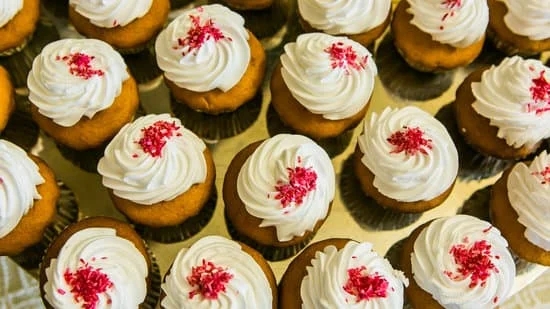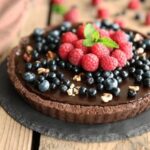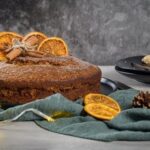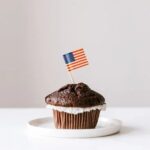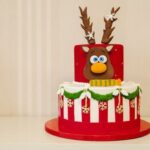Cake decorating is more than just spreading frosting on a cake. It is an art form that requires skill, creativity, and precision to create visually stunning creations. Whether you are a novice baker looking to improve your skills or a seasoned pro wanting to take your decorating techniques to the next level, these cake tips for decorating will provide you with the tools and knowledge needed to elevate your cakes from simple desserts to works of art.
Adding intricate designs, vibrant colors, and decorative elements can transform a basic cake into a masterpiece that is sure to impress. With the right tools, frosting techniques, and understanding of color theory, you can unleash your creativity and bring any cake vision to life. From piping bags to offset spatulas, buttercream to fondant, there are endless possibilities when it comes to decorating cakes.
In this article, we will explore the essential tools needed for cake decorating, different types of frostings and their uses, as well as tips for achieving smooth finishes and mastering piping techniques. We will also delve into the world of decorative elements and embellishments, troubleshooting common mistakes that may occur during decorating, and even touch on advanced techniques for those looking to push their skills further.
Get ready to unleash your inner artist and create show-stopping cakes with these cake tips for decorating.
Essential Tools for Cake Decorating
Cake decorating is a creative and fun activity that allows bakers to showcase their artistic skills through beautifully decorated cakes. However, in order to achieve professional-looking results, it is important to have the right tools at your disposal. Here are some essential tools for cake decorating that every aspiring decorator should have in their arsenal:
- Piping bags: Piping bags are a must-have tool for cake decorating as they allow decorators to create intricate designs and patterns with frosting. Whether you’re piping buttercream rosettes or writing a message on a cake, piping bags are essential for precise decorating.
- Piping tips: Piping tips come in various shapes and sizes, each creating different designs when used with a piping bag. From star tips to round tips, having a variety of piping tips on hand can help you achieve different textures and effects on your cakes.
- Offset spatula: An offset spatula is an indispensable tool for smoothly applying frosting to cakes. Its angled blade allows decorators to easily spread frosting on the sides and top of a cake, creating a clean and polished finish.
- Bench scraper: A bench scraper is a handy tool for smoothing out the sides of a cake after frosting. It helps decorators achieve sharp edges and straight lines, giving the cake a professional look.
Having these essential tools for cake decorating in your toolkit will not only make the process easier but also elevate the overall look of your creations. Whether you’re a beginner or an experienced decorator, investing in quality tools will help you unleash your creativity and bring your cake decorating visions to life.
Choosing the Right Frosting
When it comes to cake decorating, one of the most important decisions you’ll make is choosing the right frosting. Each type of frosting has its own unique characteristics and advantages, so it’s essential to understand the differences between buttercream, fondant, and ganache before making your choice. Here are some key points to consider when deciding on the perfect frosting for your cake:
- Buttercream: Buttercream is a classic choice for cake decorating, known for its creamy texture and rich flavor. It is made with butter, powdered sugar, and flavorings like vanilla or cocoa. Buttercream is versatile and easy to work with, making it ideal for piping intricate designs or creating smooth finishes on cakes.
- Fondant: Fondant is a pliable sugar paste that can be rolled out and draped over cakes to create a smooth, flawless finish. Fondant is popular for wedding cakes and elaborate designs because it provides a clean canvas for intricate decorations. While fondant may not be as tasty as buttercream, many decorators appreciate its versatility and professional look.
- Ganache: Ganache is a luxurious mixture of chocolate and cream that can be used as both a frosting and a filling for cakes. Ganache has a rich, glossy finish that adds elegance to any dessert. It can be poured over cakes for a decadent glaze or whipped into a fluffy frosting for a luscious texture.
Each type of frosting offers its own benefits and challenges, so consider your personal preferences and the desired outcome when selecting the perfect frosting for your next baking project.
Whether you choose buttercream, fondant, or ganache for your cake decorating needs, remember that practice makes perfect when it comes to creating beautiful designs. Experiment with different techniques and tools to find what works best for you and don’t be afraid to get creative with your decorations.
Understanding Color Theory in Cake Decorating
Color theory plays a crucial role in cake decorating, as it can make or break the overall design of your creation. By understanding the basics of color theory, you can create visually pleasing designs that are not only appealing to the eye but also harmonious in their presentation.
One key aspect of color theory is the color wheel, which consists of primary colors (red, blue, yellow), secondary colors (orange, green, purple), and tertiary colors (a mix of primary and secondary colors). Complementary colors, which are located opposite each other on the color wheel, create high contrast when used together and can make your cake design stand out.
When selecting colors for your cake decoration, consider the mood or theme you want to convey. Warm colors like reds, oranges, and yellows evoke energy and excitement, while cool colors like blues, greens, and purples convey calmness and tranquility.
Analogous colors are those that are next to each other on the color wheel and create a harmonious blend when used together. Triadic colors consist of three equally spaced hues on the color wheel and provide a balanced yet vibrant color scheme for your cake decorating projects.
Incorporating different shades, tints, and tones of a particular color can add depth and dimension to your cake design. Experiment with various color combinations to see what works best for your intended theme or aesthetic.
Remember that less is often more when it comes to using color in cake decorating – too many bold hues can overwhelm the eyes and detract from the overall impact of your creation. By mastering color theory principles in cake decorating, you can elevate your designs to new levels of sophistication and visual appeal.
| Color Theory Tips | Benefits |
|---|---|
| Use complementary colors for high contrast | Create visually striking designs |
| Consider warm vs cool colors for mood setting | Evoke specific emotions with your cakes |
| Experiment with shades and tones for depth | Add dimension to your cake creations |
Tips for Smoothly Applying Frosting
When it comes to cake decorating, one of the key skills that every baker should master is smoothly applying frosting to achieve a flawless finish. Whether you’re working with buttercream, fondant, or ganache, the way you apply and smooth out your frosting can make all the difference in the final look of your cake. Here are some tips and techniques to help you achieve that polished and professional finish.
Prepping Your Cake
Before you even think about applying frosting to your cake, it’s important to start with a properly prepped surface. Make sure your cake layers are level and even before stacking them, as this will make it easier to frost them smoothly later on.
Crumb coat your cake first by applying a thin layer of frosting to seal in any crumbs, then chill it in the fridge before adding the final coat of frosting. This will give you a clean slate to work with and prevent any crumbs from ruining your finished look.
Using the Right Tools
Having the right tools for applying frosting can also make a big difference in achieving a flawless finish. Invest in an offset spatula for smooth application and an icing smoother for those perfectly straight edges. Piping bags with various tips can also come in handy for creating intricate designs or borders on your cakes.
And don’t forget a turntable to easily rotate your cake as you work, ensuring an even coating of frosting on all sides. By using these tools, you’ll have more control over the application process and be able to create cleaner lines and smoother surfaces.
Techniques for Smoothing Out Frosting
There are several techniques you can use to smooth out frosting and achieve a flawless finish on your cakes. One popular method is the Viva paper towel technique, where you gently press a non-textured paper towel against the frosted cake and smooth out any imperfections. Another option is using a hot spatula to melt and smooth out buttercream or ganache on the surface of the cake.
Practice different techniques to see which one works best for you and gives you the polished result you desire when decorating your cakes. By mastering these methods, you’ll be well on your way to creating beautifully frosted cakes that are not only visually appealing but also taste delicious.
The Magic of Piping Techniques
The art of cake decorating wouldn’t be complete without mastering the magic of piping techniques. Piping is a skill that allows you to create intricate designs, add texture, and bring your cakes to life with beautiful swirls, rosettes, and more.
To achieve perfect piping results, it is essential to use the right tools – piping bags and various tips are a must-have for any aspiring cake decorator. Experiment with different tips to create a variety of effects, from delicate lace patterns to bold borders.
When using piping techniques, consistency in frosting is key. Make sure your frosting has the right texture – not too stiff nor too runny. If your frosting is too stiff, it will be difficult to pipe smoothly; if it’s too runny, your designs may lose their shape. Practice on a separate surface before piping directly onto your cake to ensure that you have the right feel for the pressure needed and the speed of movement.
In addition to swirls and rosettes, piping can also be used to write messages or names on cakes, create intricate lace patterns, or even make 3D elements like flowers. With practice and patience, you’ll be able to master different piping techniques and elevate your cake decorating skills to new heights.
Remember, practice makes perfect when it comes to piping – so don’t be afraid to experiment and try out new designs on parchment paper before moving on to your final masterpiece.
| Cake Decorating Tip | Useful Data |
|---|---|
| Practice Consistency in Frosting | Ensure that your frosting is neither too stiff nor too runny for smooth piping |
| Experiment with Different Piping Tips | Try out different tips for creating various effects and designs |
| Practice Makes Perfect | Don’t be discouraged by initial attempts – keep practicing until you achieve desired results |
Decorative Elements and Embellishments
Sprinkles Galore
Sprinkles are perhaps one of the most popular and versatile decorative elements in cake decorating. Whether you prefer traditional rainbow jimmies or shimmering metallic dragees, sprinkles come in an array of shapes, sizes, and colors to suit any theme or occasion. For a whimsical touch, consider mixing different types of sprinkles together or opt for specialty varieties like sugar pearls or confetti quins.
Edible Flowers
Adding fresh flowers to cakes has become increasingly popular in recent years, as they can provide a natural and elegant aesthetic. When using edible flowers on cakes, it is crucial to ensure that they are safe for consumption and have not been treated with pesticides. Popular choices for edible flowers include roses, lavender, pansies, and violets. Edible flowers can be arranged individually or scattered across the cake for a beautiful garden-inspired look.
Beyond the Basics
In addition to sprinkles and edible flowers, there are countless other embellishments you can use to enhance your cakes. Consider incorporating edible glitter, gold leaf, chocolate shards, or even hand-painted designs using food coloring or edible ink. For themed cakes, you can use fondant cutouts shaped like animals, letters, numbers, or objects relevant to the occasion. The possibilities are endless when it comes to adding unique touches to your creations with decorative elements and embellishments.
By experimenting with different decorative elements and embellishments such as sprinkles and edible flowers can significantly enhance your cake decorating skills while allowing you to showcase your creativity.
Whether you’re aiming for a classic look or pushing boundaries with innovative designs creating eye-catching cakes is all about paying attention to details like colors textures flavors techniques patterns shapes etc Don’t be afraid to think outside the box when it comes decorating remember r whole point is enjoy process express yourself through delicious desserts that will wow friends family guests alike.
Troubleshooting Common Decorating Mistakes
Cake decorating can be a fun and rewarding experience, but sometimes things don’t go as planned. One common issue that decorators face is cracked fondant. This can happen when the fondant is rolled too thin or if it dries out too quickly.
To prevent cracking, make sure to knead the fondant well before rolling it out and work quickly to cover your cake. If you do end up with cracks, simply use a small amount of water or clear alcohol like vodka to gently smooth them out.
Another frustrating problem that decorators encounter is runny frosting. This can happen for a variety of reasons, such as using too much liquid or not properly incorporating the ingredients. To fix runny frosting, try adding more powdered sugar to thicken it up or refrigerate it for a short period of time to help it set. You can also rescue runny frosting by adding a small amount of cornstarch or buttercream to stabilize it.
In addition to cracked fondant and runny frosting, decorators may also face other challenges like misshapen decorations or uneven layers. One tip for fixing misshapen decorations is to gently reshape them with your fingers or tools before they fully harden.
If you have uneven layers on your cake, use a cake leveler or serrated knife to carefully trim them down until they are even. Remember, practice makes perfect when it comes to cake decorating, so don’t be afraid to experiment and learn from your mistakes along the way.
Advanced Techniques for Cake Decorating
For those who have mastered the basics of cake decorating and are looking to take their skills to the next level, advanced techniques offer a world of creative possibilities. One popular technique is creating layered designs on cakes, where different textures and colors are stacked to create a visually stunning effect. This can be achieved by using different types of frosting or fondant, as well as incorporating edible decorations such as chocolate shavings or fresh fruit.
Another advanced technique that can elevate your cake decorating game is fondant sculpting. Fondant is a versatile and pliable icing that can be molded into intricate shapes and designs. From sculpting delicate flowers to creating figurines or detailed patterns, fondant allows decorators to add personalized touches and unique elements to their cakes. With practice and patience, fondant sculpting can open up a whole new realm of artistic expression in cake decorating.
In addition to layered designs and fondant sculpting, there are many other advanced techniques that experienced decorators can explore. These may include using airbrushing or stenciling for precise detailing, incorporating sugar paste modeling for three-dimensional effects, or experimenting with techniques like marbling or painting on cakes.
The key to mastering these advanced techniques is practice, experimentation, and a willingness to push the boundaries of traditional cake decorating. By continuously learning and exploring new methods, decorators can continue to grow and evolve their craft while creating stunning works of edible art.
Conclusion
In conclusion, cake decorating is truly an art form that allows for endless creativity and expression. By mastering essential tools like piping bags and offset spatulas, understanding the different types of frosting available, and utilizing color theory effectively, decorators can elevate their creations to new heights. Smoothly applying frosting and mastering piping techniques such as swirls and rosettes are key elements in achieving a flawless finish on cakes.
Moreover, incorporating decorative elements like sprinkles, edible flowers, and other embellishments can add personality and charm to any cake. It is essential for decorators to troubleshoot common mistakes such as cracked fondant or runny frosting in order to salvage their designs. Through practice and patience, even beginners can progress to more advanced techniques like layered designs and fondant sculpting.
Ultimately, the world of cake decorating offers endless possibilities for those who dare to dream and experiment with different techniques. Whether you are a novice or an experienced decorator, always remember that the most important aspect of decorating is letting your creativity shine through in every cake you create. With these cake tips for decorating in mind, may you be inspired to continue honing your skills and creating beautiful confections that delight both the eyes and taste buds.
Frequently Asked Questions
What Are the Different Tips for Cake Decorating?
There are various tips for cake decorating that can help elevate the look of your baked creations. One important tip is to always start with a crumb coat to create a smooth surface. Using an offset spatula and turntable can also make icing a cake much easier. Additionally, experimenting with different piping tips can create beautiful designs on the cake.
What Are the 7 Different Cake Decorating Techniques?
Cake decorating involves various techniques that can help add flair and creativity to your desserts. Some popular techniques include buttercream flowers, fondant decorations, royal icing piping, sugar paste modeling, edible painting, airbrushing, and using stencils for intricate designs. Each technique offers unique ways to decorate cakes and bring your vision to life.
How Do You Decorate a Cake Like a Professional?
To decorate a cake like a professional, attention to detail is key. Start by ensuring your cake layers are level and evenly stacked before applying a crumb coat and final layer of frosting. Use tools like bench scrapers and offset spatulas for smooth finishes on the frosting.
Experiment with different piping techniques for borders or intricate designs, and don’t be afraid to add edible embellishments like fresh flowers or edible glitter for an extra touch of elegance. Practice makes perfect when it comes to professional cake decorating, so don’t be discouraged if your first attempts aren’t flawless – keep refining your skills over time.

Welcome to our cake decorating blog! My name is Destiny Flores, and I am the proud owner of a cake decorating business named Cake Karma. Our mission is to provide delicious, beautiful cakes for all occasions. We specialize in creating custom cakes that are tailored specifically to each customer’s individual needs and tastes.

